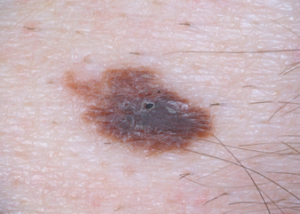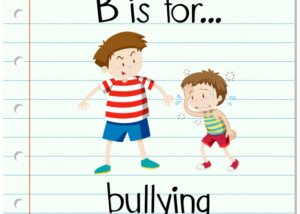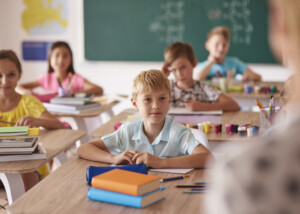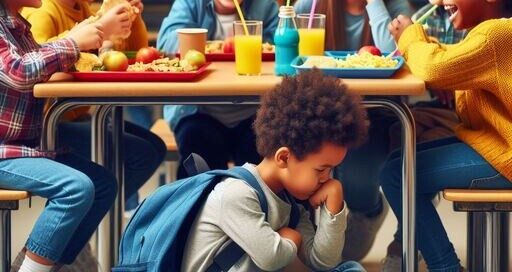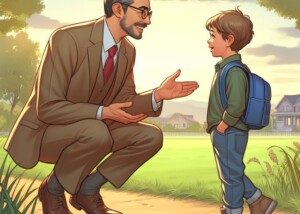What to Say Next Time Someone Says “Smile!”

“Smile!” Things can’t be that bad!” is one of the rudest things you can say to ANYONE.
“Smile!” Don’t you hate when someone says this to you? Even complete strangers will be this rude. And it’s usually a man saying this to a woman. Men rarely say “Smile!” to other men.
Is it because they fear a punch in the chops? Women rarely say this to men, as well. Or am I wrong?
But almost always, it’s a man saying it to a woman: “Smile! Things can’t be THAT bad!”
Heaven forbid if one of these clods says this to a woman who just learned her child has cancer. He deserves whatever response he gets.
To such a thoughtless man, I say: Really?
- How do you know things can’t be that bad?
- Do you know this woman personally?
- Are you living inside her head?
- Where do YOU get off declaring to someone you don’t know, that things can’t be that bad? What awful nerve.
If you’re a woman who’s getting increasingly angered by thoughtless men (or women) telling you to smile, here are smart, witty responses that will clam them up fast.
If the comment is just “Smile!” reply with one of these:
“MAKE ME.” Then give them a good long stare.
“AND IF I DON’T?” Then give them a good hard stare.
“SAY SOMETHING FUNNY.” Give them an emotionless gaze.
“AND WHAT, get smile wrinkles like some people around here?”
“I AM smiling. This is the face God gave me. Don’t like it? Take it up with HIM.”
“I DON’T SMILE ON COMMAND.”
“WHY?”
“WHY ARE WOMEN EXPECTED TO SMILE BUT NOT MEN?”
“GET RICH.”
No matter what you do, do NOT smile when someone commands you to.
The moment you smile just because a stranger told you to, you automatically rank yourself lower than them in the pack.
Women have a right to wear a face that reflects the bad day or bad week they’re having.

Shutterstock/Nicholas Piccillo
For God’s sake, what do you hope to accomplish by telling a woman, whose husband was just given a terminal cancer diagnosis, to smile?
You have NO idea if her sour face is because of that, or if it’s because she gained a pound over the weekend.
YOU DON’T KNOW, SO STAY QUIET.
And some people can’t help it; it’s the face nature gave them.
If the comment is:
“Smile! Things can’t be that bad!” reply with one of these:
1 “How would you know?” Then stare at them blankly while they try to figure out a way to get out of that one.
2 “How DARE you make that assumption about someone you don’t know?”
3 “Things can’t be that bad?? My dog got hit by a car three days ago and might lose a leg. My beloved Aunt Alice was just diagnosed with heptaphalocytovycosis. My house was broken into last week. My car needs a $1,000 repair. Now what were you saying?”
If anyone has any other great responses, please leave your comments.
I just can’t believe that people could be so rude to strangers.
Is it anyone’s business how you wear your face, especially if you’re waiting for the biopsy results?
Even if I’m having a great week, this doesn’t mean I’m going to smile.
- The human face does not naturally set in a smiling expression.
- Are people too dull to realize this?
Don’t you also find it odd that almost always, when someone tells you to smile, he himself is NEVER smiling?
I guess another great response would be: “WHY DON’T YOU?”
 Lorra Garrick has been covering medical, fitness and cybersecurity topics for many years, having written thousands of articles for print magazines and websites, including as a ghostwriter. She’s also a former ACE-certified personal trainer.
Lorra Garrick has been covering medical, fitness and cybersecurity topics for many years, having written thousands of articles for print magazines and websites, including as a ghostwriter. She’s also a former ACE-certified personal trainer.
.
Top image: Shutterstock/ArtFamily
Diet for Kids with Prader-Willi: Raw Vegetables All Day Long?

Why do women feed their Prader-Willi kids cereal for breakfast?
I was inspired to write this article after reading about a women whose 14-year-old daughter weighs 343 pounds (as of August 2014).
Hannah has Prader-Willi syndrome. If you clicked on this article, you know what PWS is, so I won’t explain it.
What puzzles me is why Hannah’s mother gives her cereal for breakfast. You don’t get a lot of bang for your buck with cereal. Three-quarters’ cup may be 120 calories—and then there’s the milk.
Cereal is a highly processed food that’s loaded with simple carbs. All Hannah gets is one cup. Then she’s done. “When’s the next meal?”
Americans are brainwashed into feeding their kids—PWS or healthy—cereal for breakfast. But cereal is not a health food.
Why not feed Hannah three cups of food for breakfast—but instead of something that comes from a manufacturing plant, how about something that comes from a real plant?
How about one bowl of diced carrots and celery; a second bowl of sliced cucumbers, tomatoes and cauliflower; and a third bowl of radishes and beets?
You’re probably thinking, “Ugh, you can’t expect a teenager or younger child to eat THAT for breakfast!”
But Hannah has eaten dog biscuits. Another Prader-Willi child I’ve read about would eat soap.
Do enough reading about what kids (and adults) with Prader-Willi syndrome will eat when not supervised, and you’ll come upon all sorts of things, like vegetable oil, jars of mayonnaise, sticks of butter, raw meat, even cardboard.
So if someone with PWS will eat these kinds of items, I’d think that several bowls of fresh vegetables would be most palatable, especially if they’re seasoned.
Three bowls of the aforementioned vegetables and fruits (tomatoes and cucumbers are fruits) equal the same calories as one cup of cereal—without the milk.
Raw produce is loaded with enzymes and natural antioxidants. Three bowls of the produce are far more healthful than the cereal.
And from a psychological perspective, the three bowls are far more satisfying because it would take longer to eat this tripled volume.
There’d be a lot of chewing. There’d be different colors, tastes and textures. Lots of crunching.
Hannah and others like her would be less inclined to be begging when their next meal is.
I’ve read about PWS kids being fed three meals a day and two snacks. Cassidie gets only four feedings a day—it’s spelled out on her Facebook page (run by her mother).
I realize that at only age seven, Cassidie can’t have more than around 900 calories a day or she’ll put on a lot of weight.
But she’d be able to have additional feeding times if some of the “regular” food was converted to vegetables.
And why do Prader-Willi kids get juice? Juice is loaded with calories. Even “normal” people, who want to lose weight are advised never to drink calories—to drink only water or Stevia-sweetened beverages—and CHEW calories!
Juice is gone in seconds: Bang, just like that—100 calories! For the same 100 calories, a person with Prader-Willi syndrome could be biting into, chewing and swallowing several cups of carrots, celery, radishes, cauliflower and broccoli.
Why give them juice? Is that necessary? No. Is the cereal necessary? No.
But cereal and juice are heavily marketed towards parents, so they’re brainwashed into thinking that if they don’t give their kids cereal and juice—they’re depriving them of something beneficial.
A child with the life-threatening disease of Prader-Willi syndrome needs a different set of rules.
A cup of the lowest calorie raw produce every two hours will surely eliminate the constant “When’s my next snack?” and provide a psychological type of satiation with all the biting into, crunching and chewing.
 Lorra Garrick is a former personal trainer certified through the American Council on Exercise. At Bally Total Fitness she trained women and men of all ages for fat loss, muscle building, fitness and improved health.
Lorra Garrick is a former personal trainer certified through the American Council on Exercise. At Bally Total Fitness she trained women and men of all ages for fat loss, muscle building, fitness and improved health.
.
Top image: Shutterstock/giedre vaitekune
Sources:
http://www.dailymail.co.uk/news/article-2738508/A-padlocked-fridge-dog-food-hidden-The-heartbreaking-condition-s-left-14-year-old-Hannah-unable-stop-eating-desperate-lengths-mother-control-appetite.html
https://www.facebook.com/CassidiesPWSJourney
Colon Cancer Abdominal Pain vs. IBS Pain: a Comparison

Does the abdominal pain from colon cancer have any resemblance to that associated with irritable bowel syndrome?
“Colon cancer with abdominal pain suggests advance stage cancer,” says Pankaj Vashi, MD, Lead National Medical Director, National Director, Gastroenterology/Nutrition/Metabolic Support, Cancer Centers Treatment of America.
Dr. Vashi explains: “The symptoms are more acute with other coexisting ‘warning signs’ like weight loss, blood in the stool, change in bowel habits.
“And loss of appetite vs. IBS related pain is a very chronic condition, usually in females, and the symptoms are present for years, usually starting at a younger age with NO associated warning signs.”
More on Abdominal Cramps and IBS
“Irritable bowel syndrome is a common GI disorder characterized predominantly by abdominal pain, that is associated with a change in stool habits; either constipation, diarrhea or a combination of both,” explains Nnenna C. Okpara, MD, gastroenterologist and director of endoscopy at the Center for Women’s Gastrointestinal Health, Women & Infants Hospital in Providence, RI.
“The pain tends to improve after bowel movements,” she continues.
“IBS symptoms can be mild, moderate or severe, and can have significant impact on the affected individual’s quality of life.
“Nonetheless, it remains an overall benign disease; it does not cause cancer and is not linked to any decrease in length of life.
“Though the single most common symptom in irritable bowel syndrome is abdominal pain, a fair proportion of IBS sufferers also complain of other pain patterns and locations; the most common of these being pelvic pain, headache, non-cardiac chest pain.”
Make sure that any chest discomfort is not the result of cardiac issues before attributing it to IBS or GERD. This will require seeing a cardiologist.
However, chest pain that changes with an alteration in body position, especially if a shift in position relieves it, probably isn’t heart related.
 For 20 years Dr. Vashi was instrumental in developing robust gastroenterology, and nutrition and metabolic support programs in all five Cancer Treatment Centers of America centers.
For 20 years Dr. Vashi was instrumental in developing robust gastroenterology, and nutrition and metabolic support programs in all five Cancer Treatment Centers of America centers.
 Dr. Okpara’s clinical interests include colorectal cancer screening, gastrointestinal disease in pregnancy, and management of functional bowel disorders, including IBS and constipation.
Dr. Okpara’s clinical interests include colorectal cancer screening, gastrointestinal disease in pregnancy, and management of functional bowel disorders, including IBS and constipation.
 Lorra Garrick has been covering medical, fitness and cybersecurity topics for many years, having written thousands of articles for print magazines and websites, including as a ghostwriter. She’s also a former ACE-certified personal trainer.
Lorra Garrick has been covering medical, fitness and cybersecurity topics for many years, having written thousands of articles for print magazines and websites, including as a ghostwriter. She’s also a former ACE-certified personal trainer.
.
Top image: Shutterstock/fizkes
Is Your Mole Larger, More Irregular, Multi-Colored?

A dermatologist provides the information you really need to know about moles that grow larger, develop an irregular shape and become multi-colored.
Certainly, you may already know that suspicious signs of melanoma are changes in a mole that include an increase in size, an evolving irregularity to its shape, and the formation of new colors.
Mole Is Bigger, Irregular, Has Different Colors
I once read in a melanoma-anxiety forum that a person noticed that his mole had gotten a bit bigger, had become irregular (he used that term — but didn’t really specify beyond that), and also became multi-colored (his wording again).
He said he feared melanoma and had it biopsied.
The result was benign. He didn’t say anything else, such as whether or not his doctor explained how these features could have changed yet the mole was still benign.
“While these worrisome features can frequently signify skin cancer, this is fortunately not always the case!” begins Dr. Rebecca Tung, MD, a
“Some medications can cause sun sensitivity leading to further pigmentation (color change) in lesions such as moles and freckles, yet do not cause cancerous change.
“Irregular shaped pigmented lesions may actually be freckles rather than moles.
“A biopsy of mole can be viewed under the microscope for a definitive answer.
“Typically, the microscopic features that identify skin cancer are very distinct from benign moles.”
A Biopsy Won’t Lie

You should always request a biopsy from your dematologist.
It is really no big deal because there is minimal discomfort.
During the procedure, a small sample of the mole or skin is removed for examination under a microscope.
Local anesthesia is applied to numb the area, so most patients feel only a minor pinch or pressure.
After the biopsy, you may experience slight soreness or tenderness at the site, but this typically resolves quickly.
The procedure is quick, and most people can resume normal activities shortly after.
Though waiting for the results means a lot of anxiety, this surely beats a situation of never-ending wondering because you didn’t have the biopsy for that odd looking mole with more than a few colors.
NOTE: When any mole is removed, regardless of the reason, it should always be biopsied.
Dr. Tung’s specialties include general dermatology with skin cancer surveillance, moles, melanoma, surgery (Mohs micrographic, laser, skin cancer reconstruction) and cosmetic dermatology.
specialties include general dermatology with skin cancer surveillance, moles, melanoma, surgery (Mohs micrographic, laser, skin cancer reconstruction) and cosmetic dermatology.
 Lorra Garrick has been covering medical, fitness and cybersecurity topics for many years, having written thousands of articles for print magazines and websites, including as a ghostwriter. She’s also a former ACE-certified personal trainer.
Lorra Garrick has been covering medical, fitness and cybersecurity topics for many years, having written thousands of articles for print magazines and websites, including as a ghostwriter. She’s also a former ACE-certified personal trainer.
.
Top image: Cancer.gov
“The School Principal Is Bullying My Child!”

Bullies come in all ages and professions, including that of the school principal.
When I was in high school, I witnessed the principal grab a boy by the throat and shove him up against a locker, barking something at him.
The scene just moments before that was docile; the boy had been doing nothing to deserve being assaulted.
The principal did NOT break up a fight.
He was just pissed at the boy and had anger management problems.
There exist parents who, if they learned that the school principal bullied their child in this fashion, they’d be waiting outside for him at his car…a fist clenched.
What should you do if the school principal is bullying your child?
“If parents suspect their principal is the bully, action must be taken immediately,” says Kate Walton, a former public school teacher who has developed very effective anti-bullying strategies for schools, and who speaks to schools and universities on the topic of “The Power of Human Kindness.”
“After talking in-depth with your child and jotting down key details about the incident(s), start by setting up a meeting with the principal and the guidance counselor.
“While being impartial is difficult when it comes to your child, go into the meeting with an open mind and be prepared to hear the principal’s side.
“If you’re lucky, the situation may be addressed during the meeting, depending on the level of productivity.
“Don’t leave the meeting without a solid picture of how future interactions between your child and the principal will look.
“If you are not satisfied with the meeting’s outcome, or if the situation between your child and the principal worsens, take your concerns to the superintendent.
“Obviously, if you believe a crime or physical assault occurred, get the police involved immediately.”
Bullying by the school principal need NOT be physical.
It can be with just words, but the school principal has no right using denigrating or intimidating words on a student.
Don’t assume that the student is asking for it, being bratty and belligerent or won’t respond to more tactful interactions.
A bully of a principal will pick on a weak student whom he believes has parents who won’t budge about the situation.
Whom the principal selects as his (or her) victims has a lot more to do with the inability of the victim to respond back with fire and/or immediately report the incidents to parents who will quickly move to action, rather than with how “bad” or disorderly the student is.
In fact, the more brash, aggressive students probably never get picked on by such a principal.
This is the same concept as child-to-child bullying: The child/teen bully picks on someone he knows won’t fight back. The principal is the same way.
My high school principal wouldn’t have dared grabbed the throat of a popular football player or a student whom he thought would immediately report this to his parents.
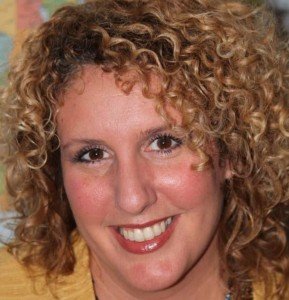 A mother of two, Kate Walton is also the author of two young adult novels about bullying, “Empty” and “Cracked.”
A mother of two, Kate Walton is also the author of two young adult novels about bullying, “Empty” and “Cracked.”
 Lorra Garrick has been covering medical, fitness and cybersecurity topics for many years, having written thousands of articles for print magazines and websites, including as a ghostwriter. She’s also a former ACE-certified personal trainer.
Lorra Garrick has been covering medical, fitness and cybersecurity topics for many years, having written thousands of articles for print magazines and websites, including as a ghostwriter. She’s also a former ACE-certified personal trainer.
.
Top image: Shutterstock/nito
Could a Teacher’s Favorite Student Secretly Be a Bully?

Yes, that sweet student who politely greets you and leaves an apple on your desk can also be one of your school’s meanest bullies — without you having a clue.
Maybe that bully sincerely likes the teacher, perhaps regarding the teacher as a “cool adult.”
Another possibility is that the bully-in-disguise is only pretending to be a model student in that particular teacher’s class — to more easily be believed should any classmates complain.
A third scenario is that the bully is fearful that the teacher, if they learn of the student’s true nature, will create a very negative consequence.
For example, perhaps the teacher is also the coach of the cheerleading squad for which the bully wants to be a part of.
How can a teacher spot a bully in disguise?
“The only way a teacher can tell a ‘nice’ kid is really a bully is to keep their eyes and ears open wherever students interact,” says Kate Walton, a former public school teacher who has developed some very effective anti-bullying strategies for schools, and who speaks to schools and universities on the topic of “The Power of Human Kindness.”
A mother of two, Walton is also the author of the young adult novels about bullying, “Cracked” and “Empty.”
Walton explains, “Constant and consistent vigilance is key.
“Teachers will see and hear things – positive, upsetting and surprising things.
“What counts is what the adult does with the upsetting or disturbing things overheard.
“When bullying is witnessed by the teacher, it is his/her job to address it.
“No matter what. Teachers simply can’t shy away from facing or addressing bullying. The perceived ‘niceness’ of the bully is irrelevant.
“No one is perfect, and even the ‘nice’ kid makes mistakes.
“Use the situation as a teachable moment for the student, an opportunity for him/her to grow as a human being. How?
“Have a purposeful and crafted conversation. Acknowledge and discuss what they did wrong, let them know how their bullying affected the other student.
“Talk about what compassion looks and sounds like. Praise them when they give it a go.
“Many students—even the ‘nice’ ones—need to be explicitly taught how to think of others, to be kind and compassionate.”
 A mother of two, Kate Walton is also the author of two young adult novels about bullying, “Empty” and “Cracked.”
A mother of two, Kate Walton is also the author of two young adult novels about bullying, “Empty” and “Cracked.”
 Lorra Garrick has been covering medical, fitness and cybersecurity topics for many years, having written thousands of articles for print magazines and websites, including as a ghostwriter. She’s also a former ACE-certified personal trainer.
Lorra Garrick has been covering medical, fitness and cybersecurity topics for many years, having written thousands of articles for print magazines and websites, including as a ghostwriter. She’s also a former ACE-certified personal trainer.
Social Exclusion: 5 Risks for Kids at School

Wondering why nobody wants to be your child’s friend?
This is called social exclusion, but it can also come with ridicule and hostile behavior.
It’s easy to take a generic, overly-broad approach and say, “A child is usually socially excluded or has no friends because she’s just plain weird,” or, “He’s just an oddball.”
“During my time in the classroom, I did notice five common traits or behaviors in socially excluded students,” says Kate Walton, a former public school teacher who has developed very effective anti-bullying strategies for schools, and who speaks to schools and universities on the topic of “The Power of Human Kindness.” A mother of two, Walton is also the author of the young adult novels about bullying, “Cracked” and “Empty.”
- A struggle with appropriate peer communication
- Lack of confidence which oftentimes showed up as a difficulty with self-expression
- Over-confidence, resulting in aggressive and intimidating behavior
- Untrustworthy actions – lying, always being at the center of drama or arguments
- Lack of personal hygiene
Point 1 can mean a number of things, including introversion, lack of emotion, an unfriendly demeanor and annoying habits.
You’re probably wondering why disabilities or notable physical traits aren’t in this list of what makes kids prone to being socially excluded.
That’s because the disability, or the trait (such as being overweight) isn’t in and of itself the cause of social exclusion. Think back to your school years.
Surely there were kids who were quite overweight, or unusually tall and gangly, who had plenty of friends.
If Point 1 applies to a child who just happens to be “fat,” or short, tall, skinny, or with braces, glasses, ears that stick out, etc., then of course, the physical trait may come up in interactions, but again, it’s not the cause of social exclusion without the presence of some dysfunction in communication.
Point 2 is easy to understand: Kids usually don’t feel comfortable around classmates who lack self-confidence. The same can be said for adults.
Point 3 makes sense because the brash, boisterous child is no more inviting to be around than an obnoxious, brazen adult.
Point 4: Who wants to be around this kind of person?
Point 5 is very interesting because when I was in grade school, there was a boy I’ll call “Andy.”
At around 1 pm or so every day, Andy began stinking really bad. I once had heard that he’d been sprayed with a skunk, and it left a permanent odor, but of course, this wasn’t the case (a person sprayed by a skunk won’t have a permanent odor, and besides, Andy didn’t smell like a skunk).
It was a bad, pungent odor, yet everyone just accepted it, and he wasn’t treated any differently.
But the general rule is that yes, bad hygeine can cause social exclusion. This can be bad breath, slimy looking hair and pungent-smelling clothes.
If your child suffers from social exclusion, find out why. Are his or her clothes clean?
Do they have an annoying habit? How do they behave with other kids?
Here’s more information from Walton on how parents should handle the situation of social exclusion with their kids.
 A mother of two, Kate Walton is also the author of two young adult novels about bullying, “Empty” and “Cracked.”
A mother of two, Kate Walton is also the author of two young adult novels about bullying, “Empty” and “Cracked.”
 Lorra Garrick has been covering medical, fitness and cybersecurity topics for many years, having written thousands of articles for print magazines and websites, including as a ghostwriter. She’s also a former ACE-certified personal trainer.
Lorra Garrick has been covering medical, fitness and cybersecurity topics for many years, having written thousands of articles for print magazines and websites, including as a ghostwriter. She’s also a former ACE-certified personal trainer.
.
Top image: ©Lorra Garrick
What to Do if Your Child Has No Friends

An expert gives advice on what parents should do and NEVER do upon realizing that their child suffers from social exclusion or that “nobody likes” him or her.
Kate Walton, a former public school teacher who has developed very effective anti-bullying strategies for schools, and who speaks to schools and universities on the topic of “The Power of Human Kindness.” A mother of two, Walton is also the author of the young adult novels about bullying, “Empty” and “Cracked.”
Have you just found out that your child has no friends and/or gets socially excluded? An open line of communication, says Walton, is crucial.
“Talking and truly listening to your child not only builds trust and confidence, but, if the situation changes and the lack of social acceptance becomes a problem, the child can express their feelings and share their thoughts in a safe environment with people who love and respect him/her.”
Don’t Make this Huge Mistake
“Assuming the social exclusion is their child’s fault is a dangerous assumption for parents to make,” says Walton.
“There are too many variables at play. The best a parent can do is excavate the situation through discussion—with the child and his/her teachers, counselors, etc.—and move forward based on what is discovered.”
You can’t force your child to just go out and “make” friends any more than YOU can magically feel wonderful about including a person in your life whom you find uncomfortable being around.
Yes, there’s a lot of truth to that age-old saying: Kids are people too!
There’s the story of a girl, Kristee, who was invited over a classmate’s house, let’s call her June.
Well, Kristee (adult now) can’t really remember why she declined June’s offer, but somehow, Kristee’s mother found out.
Kristee doesn’t recall if June told a teacher and then the teacher told Kristee’s mother, or if June found out Kristee’s phone number and spoke to her mother.
What Kristee does remember is that her mother scolded her and made her call up June and accept the invitation.
She has no memory of what happened after that. The memory stops with her mother lashing out at her and not even bothering to find out WHY she didn’t want to go over June’s house. Maybe June was just a rude girl.
Maybe it was merely a case in which Kristee felt that she and June didn’t think alike enough to spend time together.
Maybe Kristee feared not living up to June’s expectations.
Maybe she feared that June would find her boring. What a shame that her mother never asked WHY.
This reaction by the parent is not unheard of, but the strange thing is that the very parent who’d do this would, certainly, decline a lunch date with a coworker they didn’t feel comfortable around! Yet when their kid declines an invitation, it’s a crime!
If you, as the parent, don’t exactly have friends crawling out of the woodwork, or if none of your coworkers seem to want you hanging out with them during lunch, at the water cooler or after hours…then ask yourself if it’s fair that you try to force your socially excluded child to make friends.
And if you ARE popular, again, recognize that there’s any number of reasons why nobody seems to want to be your child’s friend. Do not be critical.
 A mother of two, Kate Walton is also the author of two young adult novels about bullying, “Empty” and “Cracked.”
A mother of two, Kate Walton is also the author of two young adult novels about bullying, “Empty” and “Cracked.”
 Lorra Garrick has been covering medical, fitness and cybersecurity topics for many years, having written thousands of articles for print magazines and websites, including as a ghostwriter. She’s also a former ACE-certified personal trainer.
Lorra Garrick has been covering medical, fitness and cybersecurity topics for many years, having written thousands of articles for print magazines and websites, including as a ghostwriter. She’s also a former ACE-certified personal trainer.
.
Top image: ©Lorra Garrick
Why Kids Should NOT Be Taught “Obey All Adults”

Teaching your children to “obey” all adults out of respect to them can increase their risk of being abducted by a predator.
Are you the type of parent who preaches to your children, “Obey all adults”?
Did you know this can set them up for being abducted by a sex offender?
After all, if the instruction to “obey all adults” or “respect all adults” is pounded into their heads enough, they won’t know to question that stranger who demands they get into their car.
This article is about parents who command their children to obey ALL adults.
This directive puts into the child’s mind that all grown-ups are included in this admonition. And it’s dangerous.
“The reason why is because it leaves children vulnerable to be mistreated and go along with it,” says Shani Verscheisler, founder and CEO of Magenu, a non-profit organization that creates and implements educational curriculums dedicated to empowering children in personal safety and awareness.
“If a child views him or herself as a second-class citizen, meaning always in the wrong and on the opposite end of the authority figure, it leaves the door wide open for a predator to say things like, ‘Don’t tell anyone, this is our secret,’ ‘No one will believe you because I am the adult,’ etc.
“It allows the child to be the victim at the get-go. There should never be an ‘all adults’ rule.”
Many kids are instructed (and “instructed” is a mild term here) to “respect all adults.”
A child doesn’t know the creepy adult who just happens to have a rap sheet. Why should that child automatically respect and especially obey him just because he’s a grown-up?
Imagine that child having been grilled since day one to respect and “listen to” ALL adults, and “never question an adult,” and one day here comes along that pedophile who sternly orders the child into his car. Now what do you think that child will do?
Now, we know that there are adults whom the child sees on a recurring basis, such as teachers, coaches, the piano instructor, etc. But these aren’t strangers. This article deals specifically with strangers.
“Obey all adults” can mean a child will, without a second thought, obey the order of “Come with me” by a stranger who’s actually a pedophile. The School of Common Sense teaches this.
A child — including a teenager — may be so programmed to obey without any question ALL adults, that he or she may just automatically jump into that stranger’s car or go off on foot with that sex offender who’s using an authoritative voice to get the child to comply.
In fact, this programming can very well persist into adulthood, which explains why, in many cases, an adult will silently or passively endure years of sexual harassment on the job.
They’ve been over-programmed, since childhood, to submit to authority — even when they know that the authority is abusing his or her power — even if that abuse is of criminal proportions.
The child has no radar, no sense of discretion, due to that programmed, default reaction of obeying without question.
I have actually heard parents tell their children, “Obey all adults.” Perhaps you have, too.
What’s so special, so godly, about ME, that YOUR child, a complete stranger, should bow to me without question and take orders from me?
 Shani Verscheisler
Shani Verscheisler
 Lorra Garrick has been covering medical, fitness and cybersecurity topics for many years, having written thousands of articles for print magazines and websites, including as a ghostwriter. She’s also a former ACE-certified personal trainer.
Lorra Garrick has been covering medical, fitness and cybersecurity topics for many years, having written thousands of articles for print magazines and websites, including as a ghostwriter. She’s also a former ACE-certified personal trainer.
.
Top image: ©Lorra Garrick
Does Revving Car Engines Damage Hearing?

Don’t men realize that revving up their vehicle’s engine will damage their hearing over time?
“Eight-five decibels and louder, depending on duration of exposure and individual susceptibility, can be permanently damaging to one’s hearing,” says Rachel Raphael, M.A., CCC-A, an audiologist with ENT Baltimore.
She continues: “It is a shame that there is no pain, bleeding or obvious damage at the time of exposure (sometimes takes years for the damage to show up as permanent sensorineural hearing loss, and/or tinnitus), or more people would reconsider the types of loud sounds/concerts/engine revving etc., to which they expose themselves and nearby others.
“There is nothing cool about revving up an engine! It’s annoying to everyone around in my opinion.
“It’s even less cool to have to wear hearing aids prematurely, due to all the damage that’s likely to show up down the road at a later date. (Also not cool to refuse hearing aids when needed, and keep asking ‘What?’ and ‘Huh?’ all the time!)”
Okay, so those of you reading this who enjoy tinkering with your vehicle’s engine, revving it up loudly, sitting back and basking in that thundering noise, are probably thinking that being concerned about possible hearing loss is a sign of wimpiness.
Loud noise causes hearing loss. Period. This isn’t a situation of wimpiness or being a sissy.
Of course, it’s your ears so why should this be anyone else’s business? Because nearby people, as mentioned prior, are also subjected to this noise.
“But I have to rev my car to warm up the engine.”
The need to warm it up seems to occur only among men.
In all my life, I’ve never witnessed a woman sitting in her vehicle revving up the engine for 10, let alone 20, minutes. Secondly, this “warming up” often occurs in the dead of summer.
What would happen if you skipped “warming it up” and just drove out of the parking space after turning the vehicle on? Surely it would move. Surely it would function.
The revving is just for playing around and having fun. But it’s at the cost of your hearing.
Maybe you don’t think it’s that loud. That’s because you probably already have hearing loss.
Down my street is a man (again, it’s never a woman) who sits in his pickup truck and just gloats in revving that engine, and I’m telling you, this is the loudest engine I’ve ever heard.
It is so roaring loud that I’m guessing that a decibel meter would register 120 at 50 feet away.
If you don’t think your engine is loud, record it with a decibel meter.
You may think that a few minutes here and there of revving it are harmless to your hearing.
But hearing loss is cumulative, over time; it’s stealthy and insidious, creeping up on you until one day, you realize that you’re constantly saying “What?” and “Huh?” Nothing macho about that.

Rachel A. Raphael specializes in clinical audiology and hearing aid dispensing. She helps in the diagnosis of hearing loss, tinnitus, dizziness and vestibular pathology in adults and children.
 Lorra Garrick has been covering medical, fitness and cybersecurity topics for many years, having written thousands of articles for print magazines and websites, including as a ghostwriter. She’s also a former ACE-certified personal trainer.
Lorra Garrick has been covering medical, fitness and cybersecurity topics for many years, having written thousands of articles for print magazines and websites, including as a ghostwriter. She’s also a former ACE-certified personal trainer.
.









